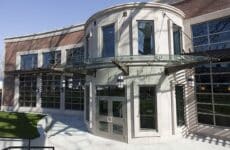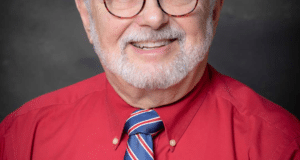By: Christina Borger
Posted In: News

Photo credit: Kristen Tomaiolo
As the cost of living continues to rise, the costs of obtaining a college degree increase as well. Students and their parents of Salve Regina University, face some hefty bills to pay as the tuition increases over a four year span.
Currently, the tuition for the 2007-2008 academic year is $37, 150, which is $2, 174 higher than the 2006-2007 academic year. With approximately 2,586 students making up the university’s total population, and 2,090 undergraduates paying full tuitions, Salve Regina will receive approximately $77,643,500 this year. The yearly increase in tuition is due to a number of things that both distinguish Salve Regina University from other New England institutions and maintain the operation of our university for the present and the future. Economic conditions, as well as demographical statistics are weighed when considering a tuition increase. Salve Regina University’s Chief Financial Officer, Bill Hall, pointed out, “One of the first things that we look at is our competition. We look at schools like Assumption College and Saint Anselm College, as well as other New England schools to see how we compare.” Also, when considering a tuition increase, the school evaluates improvements for the benefit of their students, faculty and staff. An example of an improvement was the installation of the RIPTA program, which allowed members of the university community to ride Rhode Island public transportation free within the state by showing their Salve ID. Another improvement Salve considers is better security systems, which provide a better, safer environment for our community. Also considered are the economic conditions, such as the price of gas and food. “If the price of gas increases, and we heat our buildings with gas, cook with gas, use gas to fuel our vehicles, then we would need to increase tuition to reflect that,” Hall said. The majority of the revenue students pay for room and board pays for Salve’s contract with Sodexho, who is responsible for providing dining services. Sodexho is accountable for all of the dining areas including, Miley cafeteria, Skyranch Grille, Global Café, Jazzman’s, as well as the convenience store, Miley Mart. Pat Greeno, a student from the class of 2010, was in awe when he heard some of the figures. After putting his own tuition into context, Greeno stated, “I think it really depends on how much you get involved and take advantage of what you have, especially within the area. That’s how I think you truly get your money’s worth out of tuition.” Greeno continues, “But I never realized the specifics of what our tuition gets used for, what it pays, etc. We must have quite a big budget to accommodate for everything.” The university maintains a $70 million annual operating budget, which pays $108,000 in property taxes. $103,000 of the property taxes is paid through leased properties annually. Hall noted, “Though we, as a university, are exempted from paying property taxes, we pay them by choice as a way to help the city of Newport.” He spoke about how the Newport Fire and Police Departments frequent our campus, and paying the taxes is Salve’s way of supporting the Newport community. Greeno said, “The buildings, most of which are historic, are really beautiful. I think the money that is used to maintain and preserve buildings like McAuley, Ochre Court, and some of the houses like Founders Hall and Carey Mansion is well spent.” The university also awards $15 million in scholarships, need-based aid and grants annually, according to the News, Events and Media page of the university website. Administration, faculty and staff are paid approximately 40-50% of the yearly revenue. Within the 40-50%, Salve pays for employee salaries, hourly wages, and benefits for the fulltime workers. For what does the remaining money get used? At the end of the fiscal year, if there is any excess revenue, the university will make a contribution to the endowment fund, which holds the money that provides income to Salve. Restricted gifts, contributions made to the university from alumni, are also placed into the endowment fund. Though it is a nonprofit organization, Salve, like all other colleges and universities, are entitled to showing something of a profit. Hall said, “Since Sister Therese Antone became president of the university, we have been more consistent with earning excess revenues at the end of the year.” Presently, the fund holds $42 million. Don Camerato, a member of the class of 2008, shared his opinion about tuition. “For the amount of money that tuition increases per year, I don’t feel as though I have seen a direct reflection of that money going back into the school,” said Camerato. The unveiling of the new Wetmore building at the start of this school year was the source of a great amount of pride. Hall said how big projects, like Wetmore, are not funded by tuition money. Rather, they are paid for by capital campaign and borrowed money. Camerato continues, “I feel as though the profit Salve makes is used more frugally. With the university being a nonprofit organization, I think they should have minimal money going into the endowment fund, and more money going towards improvements, more employment opportunities for students, more financial aid and scholarships. This would help those students, who are paying for their own education, reduce the amount of loans they owe after graduation.” Most graduating seniors are looking back on their college years and recounting the memories, as they look to the future filled with getting a first real job and paying off college loans. With costs and interest rates changing and increasing frequently, one begins to wonder how the future generations are going to be able to earn a degree and survive on the average income.













